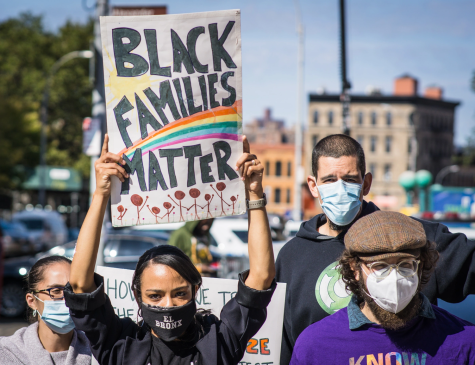Blaming the victim is not the solution
July 31, 2014
An increasing amount of children have been arriving at the U.S. border from Honduras, Guatemala and El Salvador, putting pressure on several government agencies and causing a backlash in receiving communities.
Blaming the victims is not the solution, especially since children are among the most vulnerable members of the population.
Instead it is essential to critically examine the U.S. involvement in creating the unlivable climate in Central America, driving this migration, and recognize that in a country with declining birth rates an immigrant workforce could help sustain the strained social security system.
The U.S. war on drugs has undoubtedly contributed to the migration northward by turning Central America into an “incredibly efficient network along which anything — hundreds of tons of drugs, people, terrorists, potentially weapons of mass destruction or children — can travel so long as they can pay the fare,” according to a letter to the editor from Commander of U.S. Southern Command John Kelly, who has been observing the transnational organized crime network.
Many of the children arriving at the border say they are escaping gang violence or violence at home, and more than half can be considered refugees under international law, according to a 2014 study conducted by the United Nations High Commissioner.
The U.S. continues to support harsh drug enforcement policies despite a 2011 report by the Global Commission on Drug Policy, which found that increased law enforcement unintentionally escalates violence and decriminalization has positively impacted the countries that employed it.
Beyond the violence, there are few economic opportunities for children in these countries, which is partly due to the influence of U.S.-backed neoliberal policies such as the Dominican Republican-Central American Free Trade Agreement, which encourage privatization and deregulation.
For instance, mining laws in Guatemala established in the mid-90s allow the Canadian company Goldcorp to retain “99 percent of their profits with only 1 percent going to Guatemala,” while being “in violation of several international and Guatemalan laws,” according to the Guatemala Human Rights Commission.
GHRC found “many environmental and social problems have been attributed to the mine including lung problems due to dust, over 40 dry wells, cyanide leakage, skin diseases, large cracks in homes, tensions between private security guards and community members, unfair land purchase practices, water contamination and death threats.”
Leaving these kinds of situations behind, the unaccompanied children arriving at the U.S. from Mexico are routinely turned away, while the children from Central America go through a long period of processing through various agencies such as the Department of Homeland Security and the Department of Health and Human Services.
These agencies are overwhelmed by the increasing number of children and have had trouble garnering the cooperation of receiving communities because they are afraid it will strain already-stressed social services.
But Harvard Law Professor Mary Ann Glendon’s essay, Principled Immigration, indicates declining birth rates and increasing lifespans necessitate the replenishment of the labor force in order to maintain social security.
“By 2030, spending for Social Security, Medicare and Medicaid alone will be almost 60 percent of the entire federal budget,” wrote Glendon.
An immigrant population would add to the tax base, but that means providing more access to legal avenues into the country. A lot of reform in terms of immigration and foreign policy and more resources to government agencies dealing with the issue are needed to address the issue.
At the policy level, a good start would be to increase the quotas on visas and give special consideration to children and individuals considered refugees under international law.
On a personal level, individuals can make a difference simply by ignoring what media pundits have to say about immigration and find out from the people affected in their own communities.















